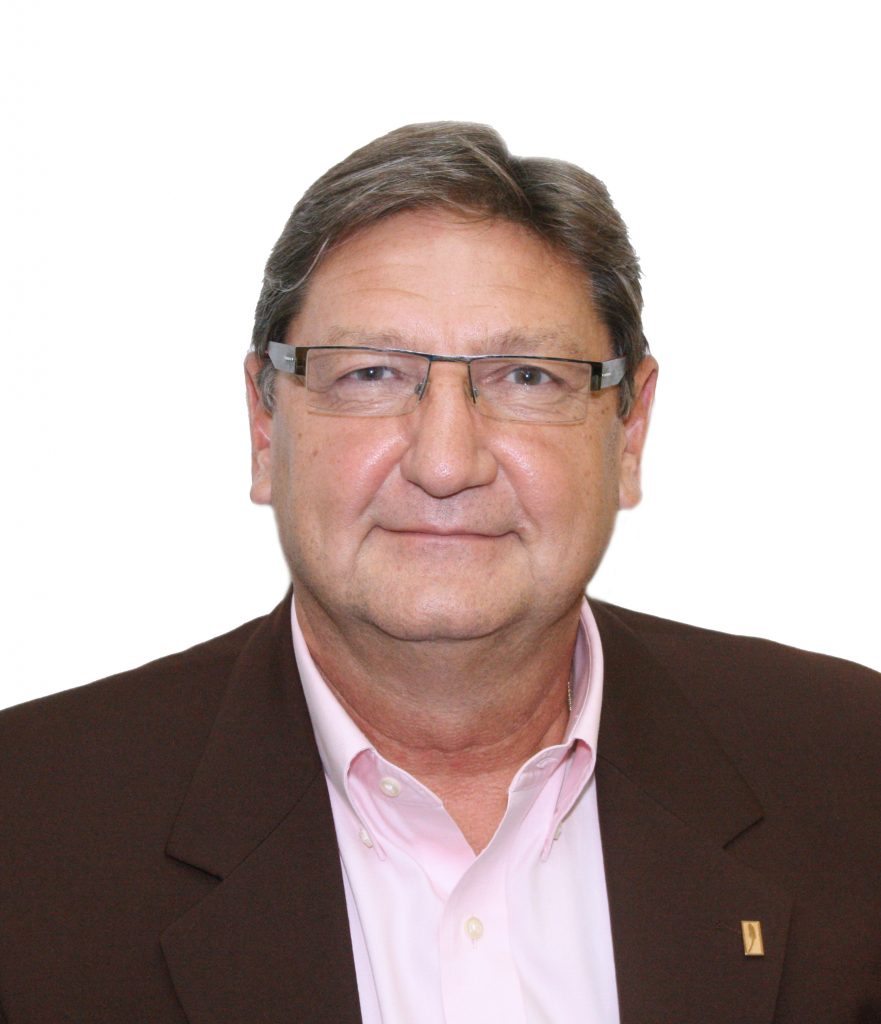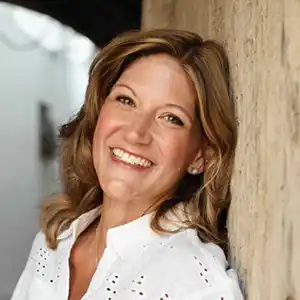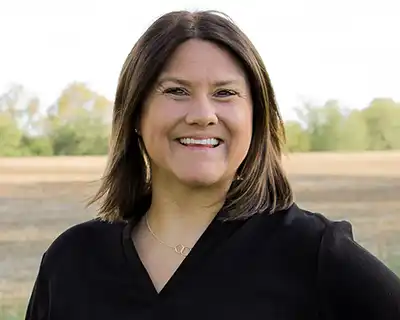
Throughout 2021, Trust In Food is inviting leaders of the Foundational Partners of America’s Conservation Ag Movement to share their vision for the future of conservation and sustainability in U.S. agriculture. In this post, we spotlight Bob Trogele, chief operating officer and executive vice president at AMVAC, an American Vanguard Company, whose SIMPAS platform is an ACAM partner. A portion of this Q&A is excerpted with permission from a recent interview Trogele gave to the investment organization Capital Alliance.
Tell us a bit about yourself. How did you arrive in this leadership role within your organization, and how does a commitment to sustainability/conservation inform how you show up to work each day?
My family has been traditionally involved in farming, and my grandfather was a horticulturist by training. This has motived me to become an executive and landowner in the agricultural food industry. Regenerative agriculture allows me in my leadership role not only to create value for shareholders, employees and our communities, but also to leave a secure food supply and sustainable food production ecosystem for future generations.
What’s one book you’ve read recently that’s challenging how you think about sustainability, conservation or the future of food and agriculture?
The one book which influenced me a long time ago was “The Fate of the Earth” by Jonathan Schell, published in 1982. I look back on reading this book this as a crucial event in my life, making me conscious of how valuable our planet is and why taking care of Planet Earth is important to society, my family and future generations. In recent agribusiness sustainability publishing – and there has been a lot – much has been written that highlights the common foundation of human life and caring for our environment as a civic and individual duty. As agriculture consumes resources, it is critical to the fate of the earth that these resources – especially water and soil – are utilized in the most productive and environmental approach. Technology advancements allow growers to continuously improve – simultaneously – the environmental aspects as well as economic production, meaning the two can be symbiotic.
In a sentence or two, describe AMVAC and the SIMPAS platform for executives in our audience who are unfamiliar with your work.
Our company was founded as a regional contract manufacturer of agricultural chemicals and is now a solutions provider in technology, innovation and sustainability and a fully integrated producer of branded specialty products, including green solutions and precision ag technologies. SIMPAS delivers economic and environmental benefits by enabling growers to place multiple inputs as needed and where needed, according to an agronomist’s prescription, and to measure and record the entire application via the software Ultimus.
What is the biggest sustainability challenge your organization is facing, and how are you navigating possible ways to address and overcome that challenge?
The biggest challenge has been communicating to target groups the benefits of our regenerative ag technologies after losing a full season in a COVID-19 year. We are now resourcing all the development potential of SIMPAS for carbon sequestration and nitrogen fixation technologies so that it is available to be field tested.
What 3 sustainability/conservation trends have you most excited and optimistic about the future of U.S. agriculture and farming in the next 4 years?
There are actually four, all of which we follow and which continue to be the focus of our technology investments: soil health, water utilization, nitrogen fixation and carbon sequestration.
What 1 sustainability trend or issue keeps you up at night and gives you heartburn?
How we at American Vanguard, a small-cap U.S. company, can fully resource our technology advancements to support the sustainability of regenerative ag. There seem so many opportunities for us to provide more value to the four trends I just mentioned.
What’s the single most important action step that sustainable food and ag professionals should be taking in the next 12 months?
USDA needs to incentivize growers beyond what they are doing today, to embrace technology in order to continuously improve and lead competitively the use of land, water and inputs for sustainable farming for the future generations. American Vanguard is ready for a public-private partnership to fund research or incentivize growers to change soil health applications.
Why is a sea change in precision application at planting long overdue?
The technology to allow a grower to digitize a farm production system has improved by leaps and bounds. A fully integrated approach is needed to support farmers in achieving that state, and while the agricultural industry strives for such a system, it is not as easy as it looks to create an ecosystem that is symbiotic with all the different components of farming. We think we have the integrated solution for the soil ecosystem, but this does not cover above-ground needs.
I’ve heard the SIMPAS platform described as an ecosystem. Describe what that ecosystem looks like, and how it comprehensively addresses the needs of farmers, retailers and the agri-food value chain.
AMVAC is tapping into the newest technology, not to mention overall farmgate digital adaptation. The key technology evolution elements in SIMPAS are designed for ease of use by farmers. Initially, we began with granular product applications only, but we have since added liquid capabilities so that the final system can apply both granular and liquid at the same time. And now we are adding on-the-fly seed treatment capabilities to enhance coated seed performance at plant. Further, the system not only allows slow-dose volumetric application, meaning it can switch ounces in furrow in a high-speed-planter seeding situation, but also precision — that is, on the seed, next to the seed, and in between the seed.
Placing RFID chips programmed with Ultimus software on returnable SmartCartridge containers also evolved the system to allow work-order agronomic prescriptions that are customized to each producer’s field characteristics and field application, targeting pest pressure, nutrient content, and microbial soil health needs.
ISO-configured, Ultimus is agnostic to the work-order agronomic source, and will validate, measure and document any soil health application. This allows growers to optimize rates year over year as they learn more, or allow food companies to register traceability. Lastly, Ultimus allows inventory management, reduces application error and allows the grower to return unused inputs and receive a credit.
How does SIMPAS think about its role in the emerging carbon and ecosystem services market space? What are the opportunities and also the watchouts or regulatory concerns the future might hold, especially related to pest control?
Sustainability benefits are delivered case by case: less water utilization, better soil health, returnable/refillable packaging, applicator safety and precise applications of inputs — only where they are needed, at the right dose rate.
Consumers and government regulators can benefit from the documentation provided by Ultimus. I’m thinking here of better traceability, auditing of carbon sequestration, and improving the environmental footprint. Ultimus also can be licensed outside of SIMPAS — we plan to target a unique business for its application to the supply chain and the benefits of reducing and tracking inventory.
In terms of carbon market opportunities for farmers, there are several ways SIMPAS can potentially help. For accreditation, growers will need to meet certain standards set by independent organizations. SIMPAS/Ultimus validates, measures, and documents all that is treated or untreated. Spatial analysis via Ultimus leaves checks in the field, as many as wanted, over a period of time —say, three to five years. These checks can be soil tested at pre-application and post-application.
Over time one can measure microbial buildup, or soil health, or carbon content — and shorter term, that is, seasonally — also root density. SIMPAS, if used as a standard tool, can validate and measure biostimulants’ microbial benefits, and document that information in a carbon sequestration filing for accreditation and payment of carbon credits.
Further, since that data is digitally documented, it allows for auditing or sampling if needed by the independent organizations — government, carbon traders, etc. In fact, the specifics of each application can be linked to a ledger platform, such as blockchain, to produce an immutable record for carbon market verification. As a result, this could significantly counter carbon emissions and add sustainability income to producers, which they would otherwise not receive. The farming community consistently targets environmental benefits especially when it comes to soil health.
We all win.



